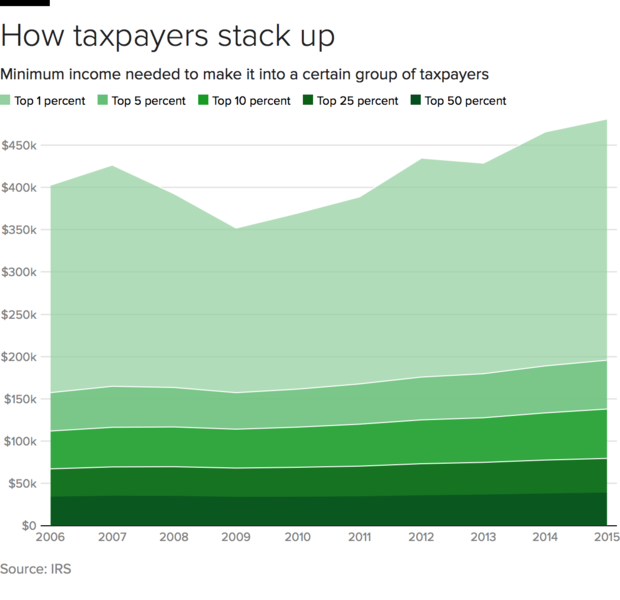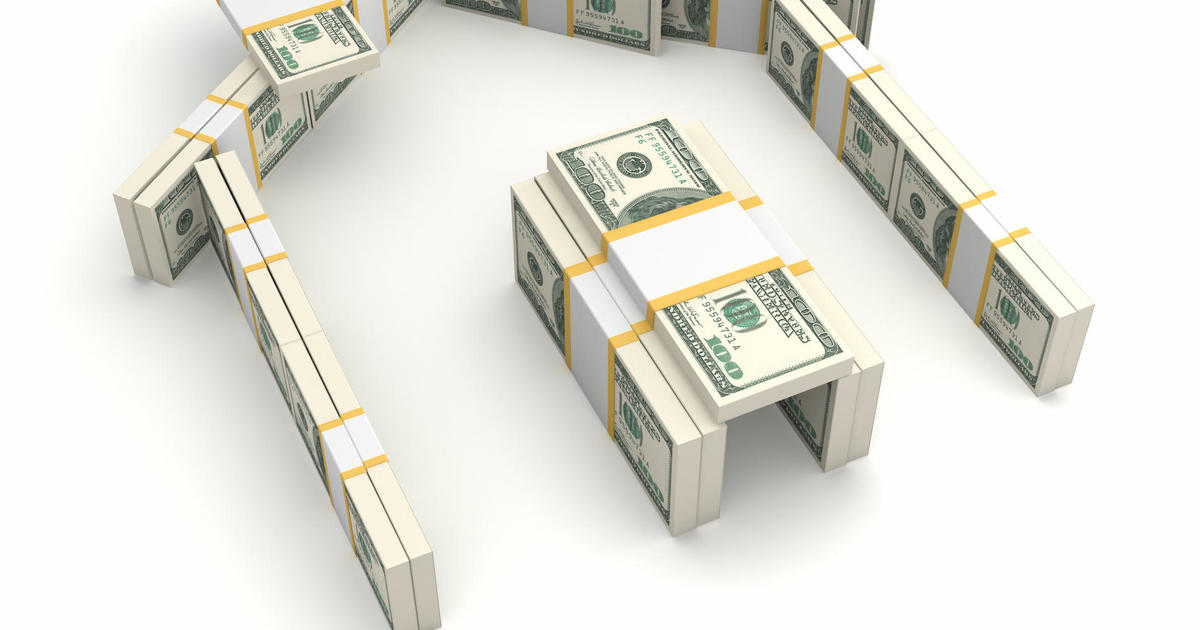How much do the 1, .01 and .001 percent really earn?
The rising fortunes of the top 1 percent of income-earners in the U.S. is drawing attention to questions of income inequality and fairness. But what is the exact financial threshold to be counted as a member of that group?
Answer: Individuals must have adjusted gross income of at least $480,930 per year, according to the IRS. Although the top 1 percent are relatively small in number -- just 1.4 million out of the nation's 141 million taxpayers -- they paid 39 percent of the country's total federal income tax, the agency said in a new report (The data is based on tax returns for 2015, the most recent year cited in the report.)
That dollar figure marks the minimum income to be counted among the top 1 percent, though most people in that category earn are more -- average annual income is $1.48 million. But that's a pittance compared with the fortunes of the top 0.01 and 0.001 percent, with average annual incomes of $35.1 million and $152 million, respectively.
As the rich have gotten richer in recent decades, income inequality is worsening around the globe, which can corrode public institutions and lead to lower standards of living for the poor and near-poor, Oxfam said last month. It noted that four-fifths of the wealth created in 2017 was claimed by the top 1 percent of income earners.
About 3.7 billion people worldwide didn't enjoy any of the new wealth created by growing economies, the charity also found.
So how's the typical American doing? To be among the top 50 percent of all taxpayers in the U.S. requires an annual gross adjusted income of at least $39,275.
Adjusted gross income for the top 50 percent of American taxpayers has increased 14 percent since 2006, or before the Great Recession. By comparison, incomes for the top 1 percent have jumped 19 percent during the same period, according to IRS data.
That supports research from the likes of economists such as Gabriel Zucman and Thomas Piketty, who have focused on the increasing gulf between the richest citizens and the rank-and-file. The rich-get-richer phenomenon is touching almost every aspect of society, from housing prices to educational outcomes. Wealthy communities, for instance, have a stronger tax base and can spend more on teacher salaries and equipment.




